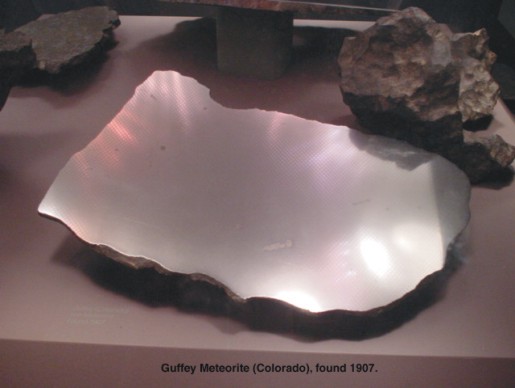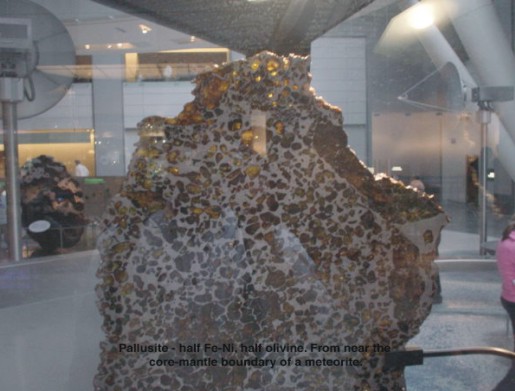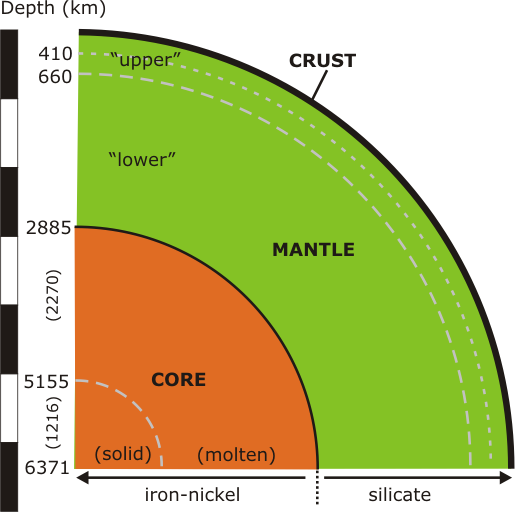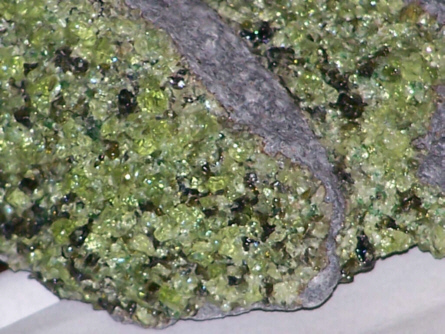It has been mentioned a couple of times in the back-channels that the ever-growing Basic Concepts series is seriously lacking in Geology. I wonder who’s supposed to do something about that? Misplaced delusions of my importance in the grand scheme of things aside, it’s an excellent idea, and I should also point out that a scroll down Thermochronic’s sidebar will lead you to some excellent geological reference posts by himself and other geoblogospheric luminaries.
Deciding where to begin is a bit tough: my plan is to concentrate on things which will be a useful reference for planned, more cutting-edge posts, but suggestions from interested/puzzled readers and commentators are of course welcome. I’m going to start with the old favourite: What is the earth made of? And how do we know?
Broadly speaking, the rocks we see on the Earth’s surface can be divided into two types: granitic (quartz rich) continental crust and basaltic (mafic) oceanic crust (hopefully the rough distribution of these two types is fairly self-evident, even if the differences between them are the subject of a whole other post or two). However, a number of different lines of evidence tell us that the composition of these rocks is not representative of the Earth as a whole:
- In many igneous rocks we can find fragments of an entirely different composition which seem to have been incorporated within it while it was still molten. These xenoliths can be parts of the crust which the magma moved through to get to the surface (see the penultimate picture here, for example), but many xenoliths are composed of something very different, brought to the surface from much deeper: peridotite, a dense, coarse-grained rock rich in the green mineral olivine.
This is the first indication that there’s a whole lot of other stuff down where we can’t see it (unless you live in the wacky universe of The Core, anyway).
- The density of crustal rocks is much too low to account for the mass of the Earth. Granite has a density of 2700 kg/m3; the density of basalt is 3000 kg/m3; the strength of Earth’s gravity requires an average density of 5500 kg/m3. Peridotite has a higher density (3200-3300 kg/m3), but not enough to solve the problem; there’s clearly a lot of something much heavier down there somewhere.
- Our next clue comes from an extra-terrestrial source: meteorites, particularly carbonaceous chondrites. These are thought to be “primitive” – they are unaltered since the time of their formation – and hence they preserve the composition of the original nebula from which the solar system condensed 4.56 billion years ago (an age we get by dating carbonaceous chondrites, incidentally). If you compare the proportions of different elements in carbonaceous chondrites to those in basalts, granites, and peridotites, we notice that there is a large deficit of iron (and to a lesser extent, nickel). Why? Because when a large enough planetary body coalesces, the heat from gravitational collapse is enough to cause internal melting and differentiation, after which the heavy elements (like iron) will move inwards to the centre and lighter things (like silicates) will move outwards to the surface (I’ve argued in the past that this would be a pretty good criterion for defining a planet, in which case the jury is still out on poor beleaguered Pluto). Concrete evidence of this process comes from iron meteorites, fragments from the cores of some of the less fortunate differentiated bodies in the early solar system.


(the meteorite on the bottom, which shows a fragment from close to a core/mantle boundary, is especially cool)
These observations allow us to guess at the gross structure of our planet: an iron-nickel core surrounded by a silicate mantle (consisting mainly of peridotite) and crust. For a more detailed picture, we can turn to earthquake seismology; seismic energy travelling through the Earth will be reflected back up towards the surface at physical or chemical boundaries. We can also check that our ideas about the composition are right, by comparing the actual speed of seismic waves with those estimated from measurements of peridotite and iron subjected to high temperatures and pressures. With this extra information we can construct an accurate cross-section.

Note that the mantle and core are further subdivided. The division between outer and inner core is physical, rather than compositional – the fact that only compressional seismic waves (P-waves – see here,) can travel through the outer core, whilst transverse waves (S-waves) cannot, tells us that it is liquid. There are also a number of reflectors within the mantle which appear to be the result of phase transitions in olivine, caused by very high pressures deep in the Earth forcing the molecular structure to become more compact. The significance of these reflectors – particularly the one at 660 km depth, which is often used to subdivide the ‘upper’ and ‘lower’ mantle – is still the subject of many arguments, mainly over whether they act as physical boundaries to mantle convection or not.
We can also see that the crust – the only bit of the Earth we can really get at to study in detail – is only a very thin veneer on the surface, like the skin of an apple. Much as we might deride The Core (and my family will tell you that the film itself wasn’t half as entertaining as my reaction to it was), most geologists would give their right arm for some “unobtanium” and a super-ultrasound-laser drill.




Comments (14)